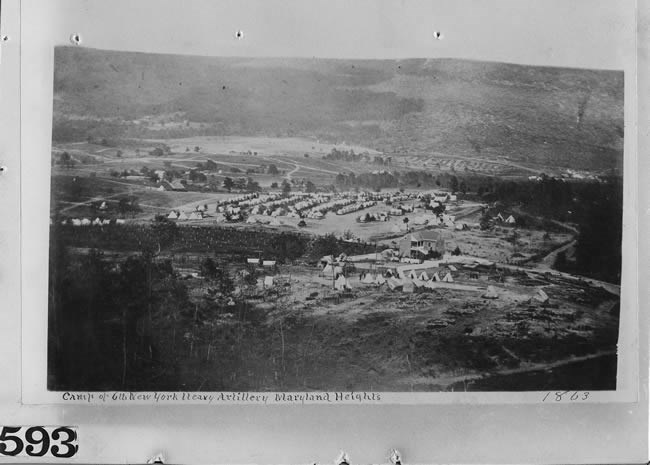Last updated: January 18, 2022
Article
"300,000 More": The 6th New York Heavy Artillery

Library of Congress
“300,000 more”: The 6th New York Heavy Artillery in the Civil War
The Union army recruitment drive of 1861 generated little enthusiasm in the St. Paul’s Church vicinity, an indication of the area’s conservative stance on the sectional disputes and a shortage of wealthy residents willing to raise and equip troops. The absence of a local enlistment drive forced men interested in serving to travel to New York City, where many regiments were gathered.
A swift Northern victory would have precluded significant military participation by the young men of the area. But Southern victories in the Battles of the Seven Days in the early summer of 1862 created an urgent need for additional Northern soldiers, and President Lincoln issued a call for “300,000 more” to defend the Union and subdue the rebellion. That enrollment campaign in August drove the imagination and patriotism of local residents, leading to a sizable number of enlistees.
Approximately 80 of them joined the 6th New York Heavy Artillery, which was recruited in Westchester, Rockland and Putnam Counties. Offering a distant mirror on the Union army and the area, these men ranged in age from 16 to 63, with an average of 25. Almost all of them were native born, and while a majority was farmers, economic changes in the area are suggested through the industrial trades listed on enlistment forms by several troops. “When the regiment was formed there were no bounties offered as an inducement to enlist and it is safe to say that patriotism is the only motive that brought this body together in defense of our country’s cornerstone, the constitution,” declared William Thiselton, a cobbler from the nearby, newly formed village of Mt. Vernon, who chronicled the regiment in his diary.
Deployed to protect the capital area, heavy artillery units were trained in the use of large siege canon, and the 6th was stationed around Baltimore and Washington D.C., experiencing minimal conflict. That changed in the spring of 1864. General Ulysses S. Grant launched the Overland campaign in Virginia, attacking the Confederate army under General Robert E. Lee in an effort to conclude the war before the fall elections. Bolstering the Northern forces, the 6th New York and several additional heavy artillery regiments were reorganized as infantry units and joined the Army of the Potomac. Since they had suffered few casualties, the heavies, as they were often called, were the largest regiments in the blue lines.
Men from the St. Paul’s vicinity fought with the 6th in the subsequent campaigns until Confederate surrender in April 1865 -- the Wilderness, Spotsylvania, Cold Harbor, the Petersburg battles, Cedar Creek. The Battle of Harris Farm in Distant view of the 6th N.Y. Heavy Artillery, near the capital area, 1863. Virginia, waged on May 19, 1864, was perhaps the unit’s greatest military achievement. General Grant was withdrawing his forces for a march around the eastern flank toward the North Anna River. General Richard Ewell, reconnoitering with experienced Confederate troops, stumbled into the heavy artillery brigade, which was guarding the Union supply line.
In its first brush with the realities of combat, the 6th engaged in a defensive operation, fighting shoulder to shoulder in parade ground formation. But unlike other troops in initial battle, they held their ground, trading rifle rounds with the much more experienced Southern troops for two hours, when “the onset though desperate was repulsed, the enemy’s line being broken by the resolute courage of our men,” Sergeant Thiselton proudly recalled. General Gordon Meade commended the regiment “for their gallant conduct in this affair and classing us with the veterans of the Army of the Potomac.”
